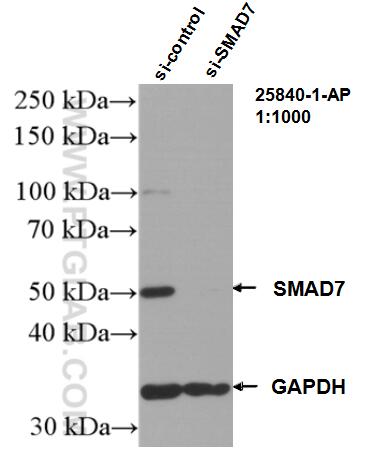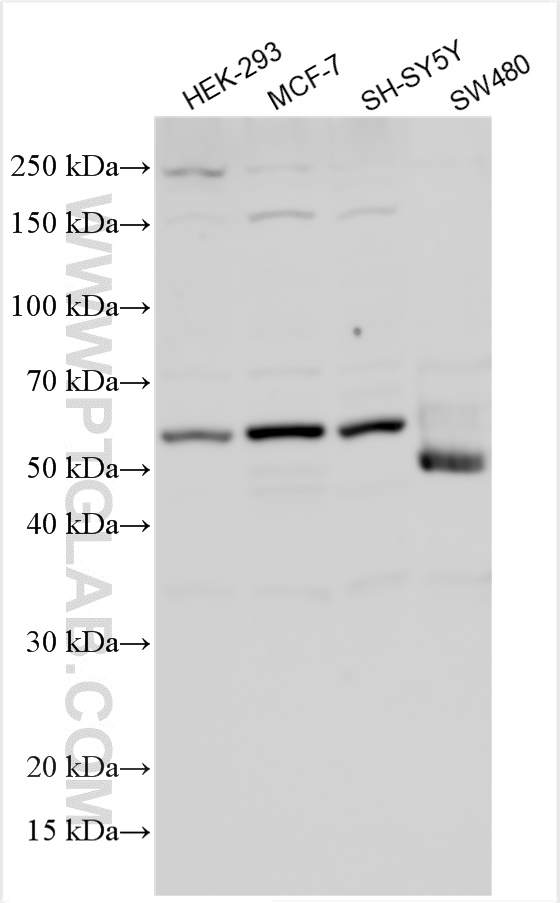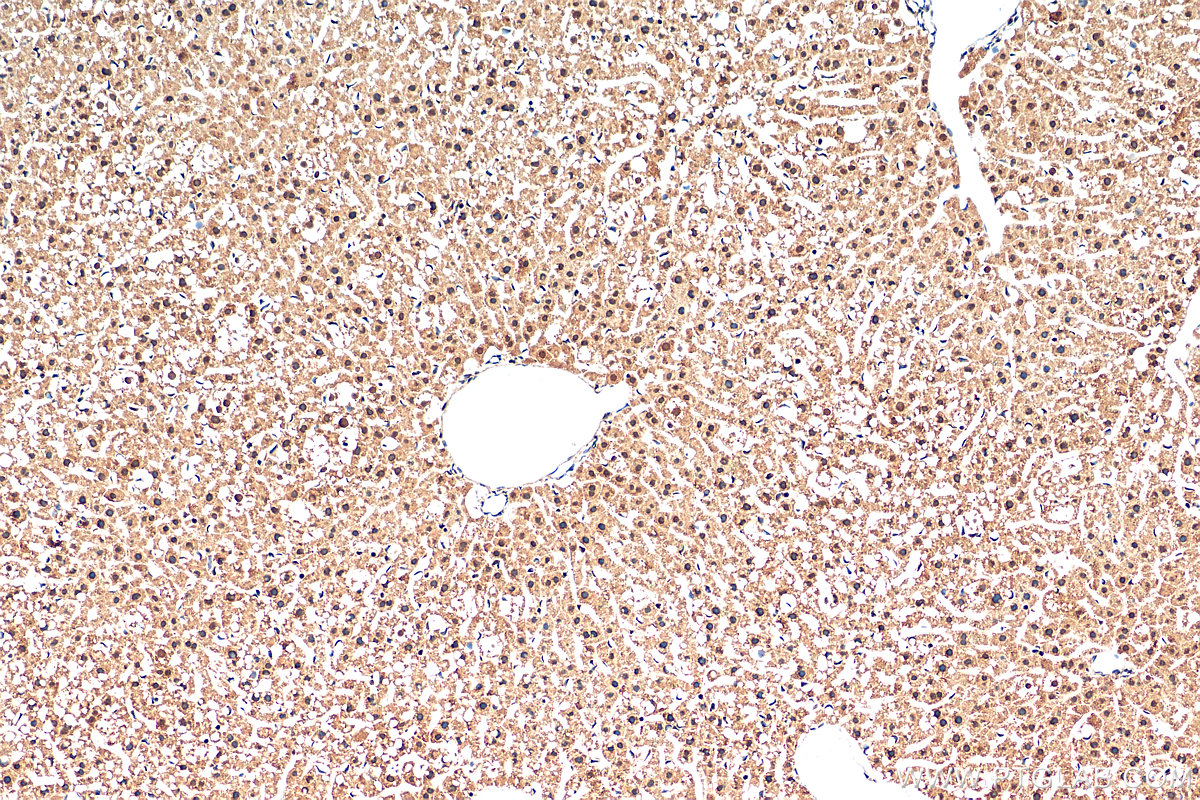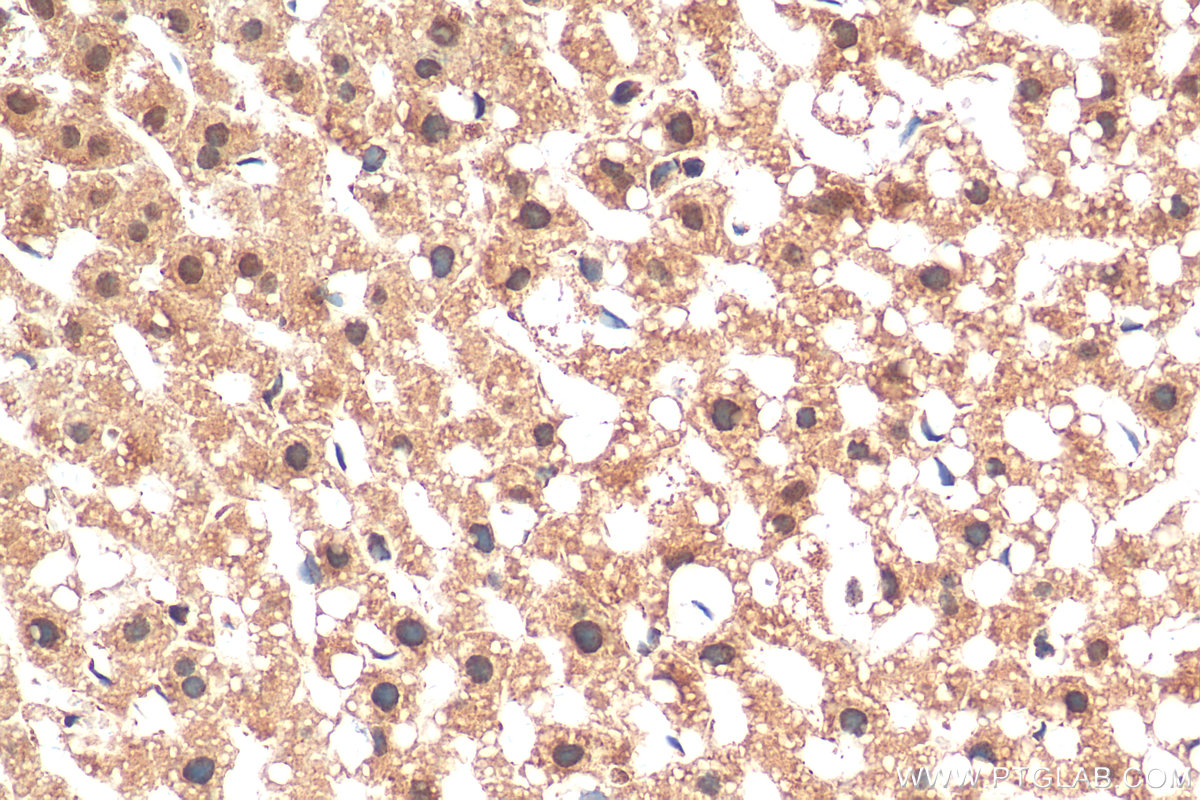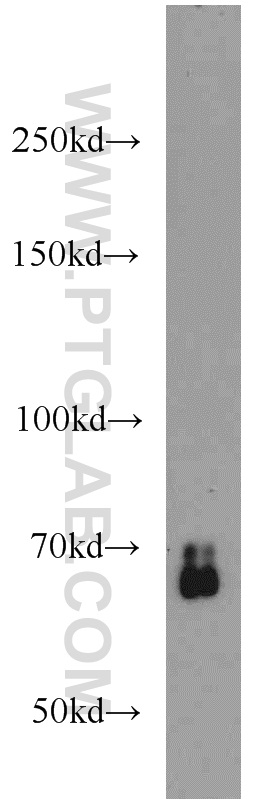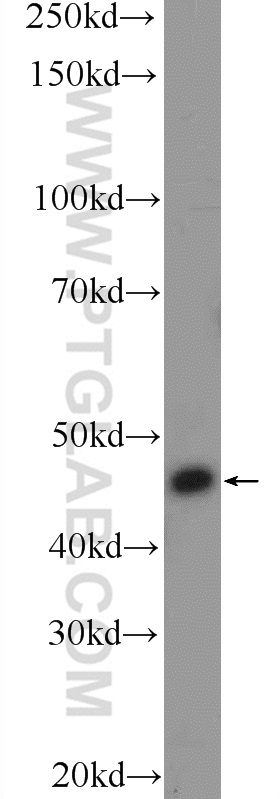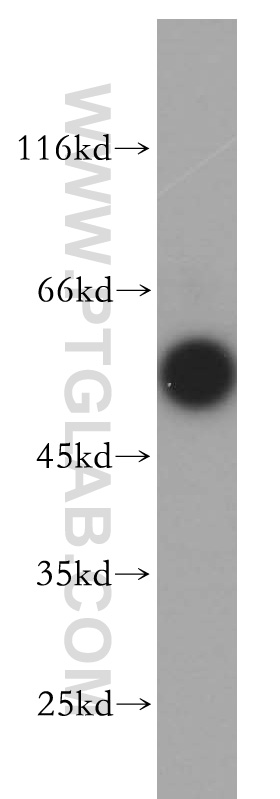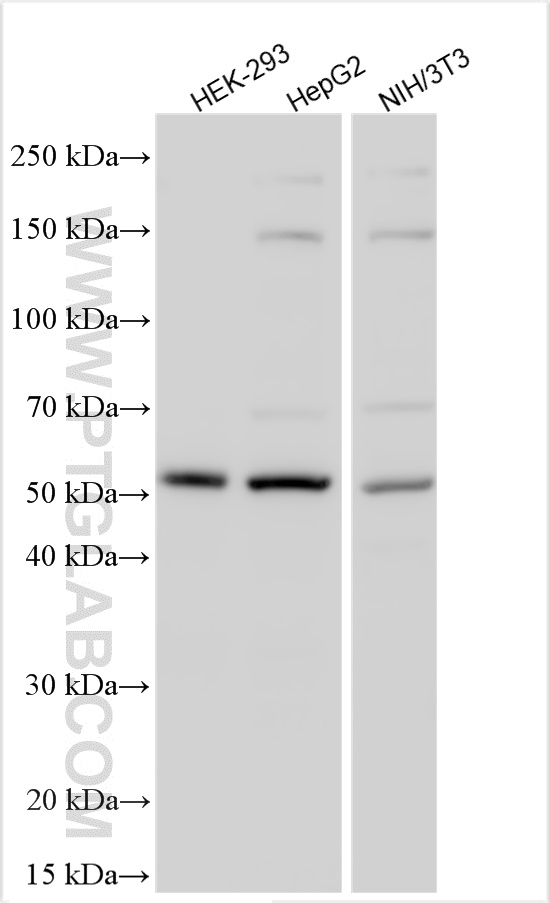- Featured Product
- KD/KO Validated
SMAD7 Polyclonal antibody
SMAD7 Polyclonal Antibody for IHC, WB, ELISA
Host / Isotype
Rabbit / IgG
Reactivity
human, mouse and More (1)
Applications
IHC, WB, ELISA and More (3)
Conjugate
Unconjugated
验证数据展示
经过测试的应用
| Positive WB detected in | HEK-293 cells, HepG2 cells, NIH/3T3 cells, MCF-7cells, SH-SY5Y cells, SW480 cells |
| Positive IHC detected in | mouse liver tissue Note: suggested antigen retrieval with TE buffer pH 9.0; (*) Alternatively, antigen retrieval may be performed with citrate buffer pH 6.0 |
推荐稀释比
| Application | Dilution |
|---|---|
| Western Blot (WB) | WB : 1:500-1:3000 |
| Immunohistochemistry (IHC) | IHC : 1:50-1:500 |
| It is recommended that this reagent should be titrated in each testing system to obtain optimal results. | |
| Sample-dependent, Check data in validation data gallery. | |
产品信息
25840-1-AP targets SMAD7 in WB, IP, IHC, IF, CoIP, ELISA applications and shows reactivity with human, mouse samples.
| Tested Applications | IHC, WB, ELISA |
| Cited Applications | CoIP, IF, IHC, IP, WB |
| Tested Reactivity | human, mouse |
| Cited Reactivity | human, mouse, rat |
| Immunogen | SMAD7 fusion protein Ag13688 种属同源性预测 |
| Host / Isotype | Rabbit / IgG |
| Class | Polyclonal |
| Type | Antibody |
| Full Name | SMAD family member 7 |
| Synonyms | CRCS3, hSMAD7, MAD homolog 7, MAD homolog 8, MADH7, MADH8, Mothers against DPP homolog 7, Mothers against DPP homolog 8, SMAD 7, SMAD family member 7, SMAD7 |
| Calculated Molecular Weight | 426 aa, 46 kDa |
| Observed Molecular Weight | 45-55 kDa |
| GenBank Accession Number | BC074819 |
| Gene Symbol | SMAD7 |
| Gene ID (NCBI) | 4092 |
| RRID | AB_2848137 |
| Conjugate | Unconjugated |
| Form | Liquid |
| Purification Method | Antigen affinity purification |
| UNIPROT ID | O15105 |
| Storage Buffer | PBS with 0.02% sodium azide and 50% glycerol pH 7.3. |
| Storage Conditions | Store at -20°C. Stable for one year after shipment. Aliquoting is unnecessary for -20oC storage. |
背景介绍
实验方案
| Product Specific Protocols | |
|---|---|
| WB protocol for SMAD7 antibody 25840-1-AP | Download protocol |
| IHC protocol for SMAD7 antibody 25840-1-AP | Download protocol |
| Standard Protocols | |
|---|---|
| Click here to view our Standard Protocols |
发表文章
| Species | Application | Title |
|---|---|---|
Brain Behav Immun MicroRNA-181c promotes Th17 cell differentiation and mediates experimental autoimmune encephalomyelitis. | ||
Nat Commun K235 acetylation couples with PSPC1 to regulate the m6A demethylation activity of ALKBH5 and tumorigenesis | ||
Cell Death Differ REGγ ablation impedes dedifferentiation of anaplastic thyroid carcinoma and accentuates radio-therapeutic response by regulating the Smad7-TGF-β pathway. | ||
Hypertension Novel Role for the Immunoproteasome Subunit PSMB10 in Angiotensin II-Induced Atrial Fibrillation in Mice. | ||
Theranostics Local administration of liposomal-based Srpx2 gene therapy reverses pulmonary fibrosis by blockading fibroblast-to-myofibroblast transition. |
